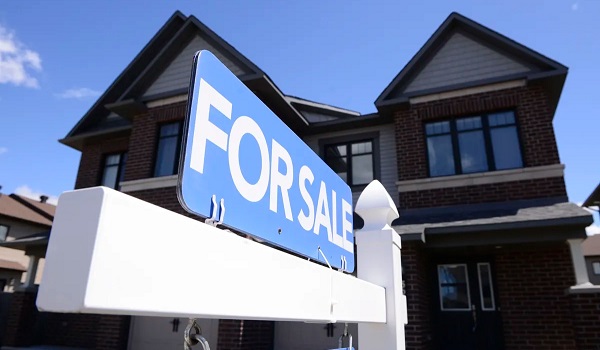Newly built home sales in GTA down in May
The chill that has taken hold of the Toronto area’s usually red-hot real estate market is leaving a growing number of new homes to languish — with stubbornly high prices and heightened borrowing costs icing out prospective buyers, and new home sales down 71 per cent compared to last year.
A new report from Altus Group analysts and the Building Industry and Land Development Association — which represents builders and renovators across the GTA — counts 936 new homes sales across the Toronto region in May, comprised of 539 condominium units and 397 single-family homes.
For new condos, that represented a 75 per cent drop in sales compared to May 2023, in the most pronounced change in the data. Sales of new single-family homes, including detached homes, semis and non-stacked townhouses, were down 65 per cent year over year, the figures show.
“We’re quite concerned. We’re hearing it daily now from our members that just nothing is moving,” said BILD executive Justin Sherwood. When new and pre-construction sales sputter, he warned newer projects can wind up on ice — resulting in fewer homes hitting the market in the years to come. As home demand is forecast to grow, he expects that could push prices even higher.
“In a year, year and a half, you’re going to be looking at price appreciation and less choice,” Sherwood said.
For now, their report shows new home inventory still rising, with an increase of 20,427 new homes on the market in May — 16,845 condos and 3,582 single-family homes. At the recent pace of sales, the report estimates it’s enough inventory to last for 14.5 months. But the market is starting to shift, Sherwood said, forecasting a bigger change ahead. “We’re already starting to see a slowdown in housing starts, but that’s going to accelerate precipitously,” he said.
The freezeout of new buyers today is the latest development in a housing market that has frustrated buyers and renters alike for many years, with competition stoking prices beyond the reach of average families.
The Altus and BILD report noted a slight easing of prices for newly built homes compared to last year, with new condos selling for five per cent less and new single-family homes down seven per cent. But their own benchmark prices still put the costs of a new condo — including stacked townhouse condos — at just over a million dollars, and new single-family homes at roughly $1.6 million.
At those prices, a condo would require a household to save around $200,000 to make a 20 per cent down payment, and could leave a family paying around $5,000 per month or more through a fixed-rate mortgage agreement. For their benchmark single-family home, a 20 per cent down payment alone would be more than $320,000, plus thousands of dollars per month in carrying costs.
A Star analysis this spring, looking at carrying costs over the last four years, found that even as home prices have dropped from their pandemic peak, it’s gotten more expensive to be a homeowner in the region — with variable rate mortgage holders, in particular, spending around 30 per cent more monthly.
While the Bank of Canada recently dropped its key overnight rate from 5 to 4.75 per cent after a sustained campaign of rate hikes from the record pandemic lows, industry players have reported little effect on sales activity across Toronto. Some sellers, hopeful the rate cut would set off a starting gun for prospective buyers waiting on the sidelines, have continued to price homes above market value, the Star’s Clarrie Feinstein has reported.
Sherwood, asked about the Toronto-area’s still sky-high home ownership prices, doesn’t believe a major drop is likely, barring significant interventions — citing forces from limited land to higher construction labour and materials costs.
And even if the Bank of Canada continues to slash its key rate, lowering mortgage carrying costs, he fears the brakes have been pumped enough in the real estate market to create a lasting ripple over the coming years — limiting new supply that could ease competition and prevent further run-ups in sale prices.
“Right as interest rates start to come down to a point where people are going to be jumping into the market, we’ll have less supply,” he said. “It’s going to mean such a gap in the market.”
This article was first reported by The Star












